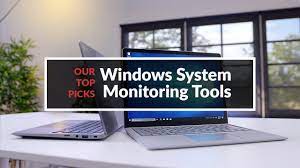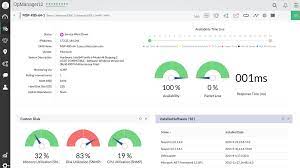6 Best Windows Monitoring Tools You Should Know About

6 Best Windows Monitoring Tools You Should Know About
Windows monitoring tools offer a wealth of information that can help administrators keep tabs on their systems. Here are six of the best open source Windows monitoring tools.
1. Nmap: This tool is used to scan networks for vulnerable servers and other devices. It can also be used to map out network traffic flows.
2. Sysmon: Sysmon is a versatile system monitor that provides detailed information about system performance and health. It can also be used to detect malicious activity.
3. WMI: TheWindows Management Instrumentation (WMI) API allows administrators to access information about system resources and configuration from within Windows PowerShell scripts.
4. Solarwinds Server Monitor: This tool offers comprehensive monitoring coverage for servers, applications, services, and containers across multiple clouds and platforms. It includes features such as automated response capabilities and real-time alerting for incidents detection.
5. Openshift Originator: Openshift Originator helps administrators configure, deploy, monitor, and troubleshoot OpenShift applications with ease from one centralized location. It includes features such as application health checks, performance analysis, and fault tolerance reporting.. 6. Nagios Core: Nagios Core is a popular open source monitoring software that supports a wide range of network infrastructure devices including servers, switches, routers, load balancers, storage arrays, and more
windows 10 home edition remote desktop
If you’re looking for a way to remotely manage your Windows 10 PC, you’ll want to check out some of the available monitoring tools. We’ve compiled a list of six of the best, based on our research and user feedback.
1. System Center Configuration Manager (SCCM)
System Center Configuration Manager is one of the most popular remote management tools on the market, thanks to its extensive capabilities and ease of use. When it comes to managing Windows 10 PCs, SCCM offers powerful capabilities such as deploying and managing updates, creating and managing task sequences, tracking devices and more.
2. RDPin Remote Desktop Services Client
RDPin is a popular remote desktop client that offers a wide range of features, including support for virtualized environments and rich media streaming. It also has a built-in security feature that allows you to create secure connections between your computer and other devices.
3. WS-Management for Windows Server 2016

WS-Management is a versatile remote management protocol that can be used to manage servers running Windows Server 2016 or earlier versions of Windows Server. This tool provides administrators with access to all aspects of the server, from configuring settings to performing maintenance tasks.
4. WinChecker for Windows 10 Pro/Enterprise/Education
WinChecker is a free tool that’s designed specifically for monitoring Windows 10 PCs. This program provides users with detailed information about their system’s performance, status, and
virtualbox images windows 10
VirtualBox is a powerful virtualization software that allows users to run multiple operating systems simultaneously on a single computer. This can be extremely useful for testing purposes or for using different applications on a single computer.
Windows 10 offers a number of benefits that make it an ideal platform for virtualbox use. For example, Windows 10 offers more security features than previous versions of Windows, and it also has better performance. Additionally, virtualbox can be used to create virtual machines that can be used to test applications before they are deployed to a production environment.
Below are six best Windows monitoring tools you should know about:
1) Network Monitor: Network Monitor is a comprehensive network management tool that provides information about all aspects of the network, including traffic, packets, flows, and protocols. Network Monitor can be used to diagnose issues with the network and to monitor performance.
2) System Information Viewer: System Information Viewer (SIW) is a graphical tool that displays detailed information about all aspects of the system, including hardware status, installed software, and running processes. SIW can be used to diagnose issues with the system and to monitor performance.
3) Performance Monitor: Performance Monitor is a comprehensive performance management tool that provides information about the status of the system and the performance of various subsystems. Performance Monitor can be used to diagnosis issues with the system and to monitor performance.
4) Task Manager: Task Manager is a utility
